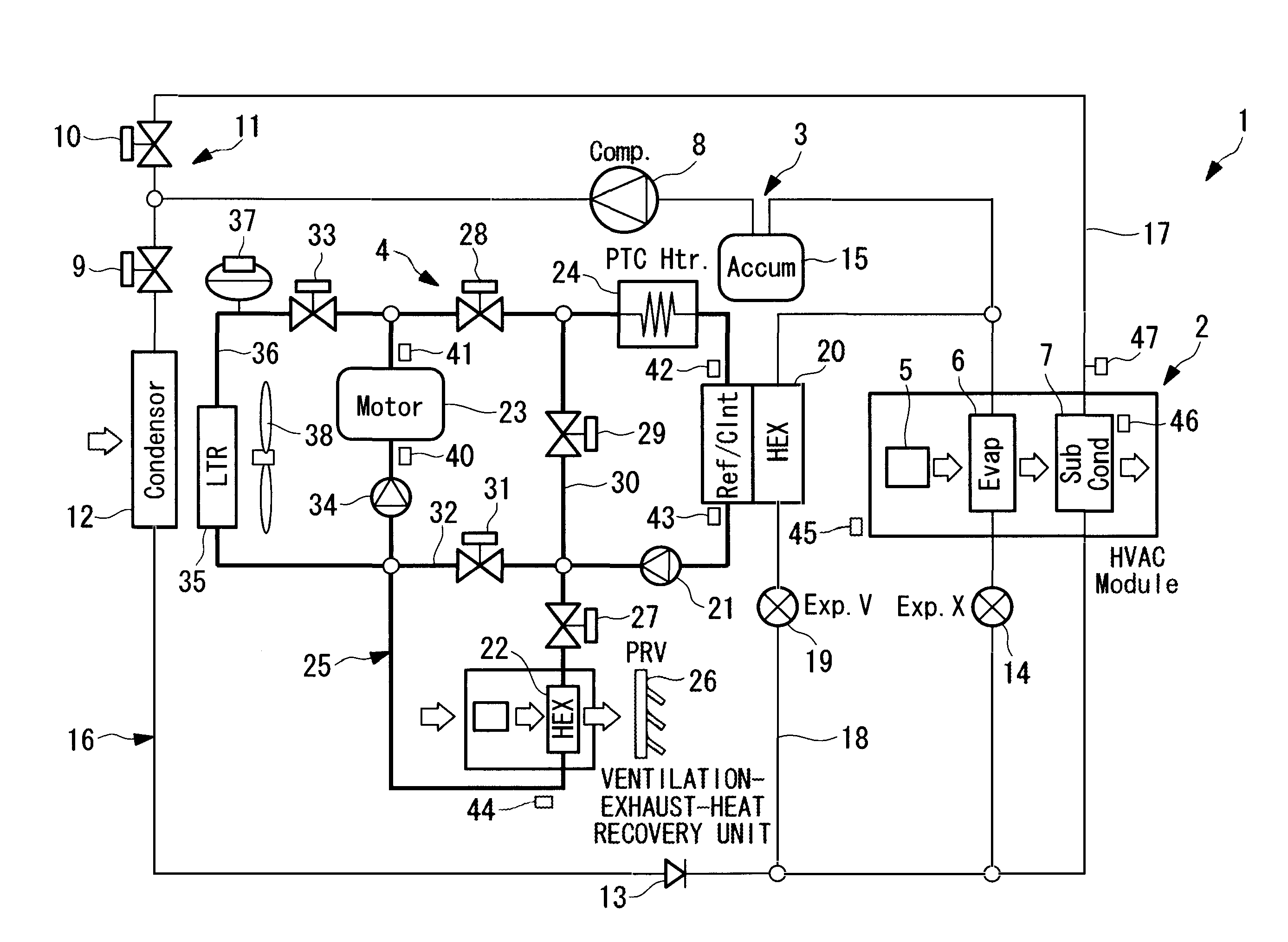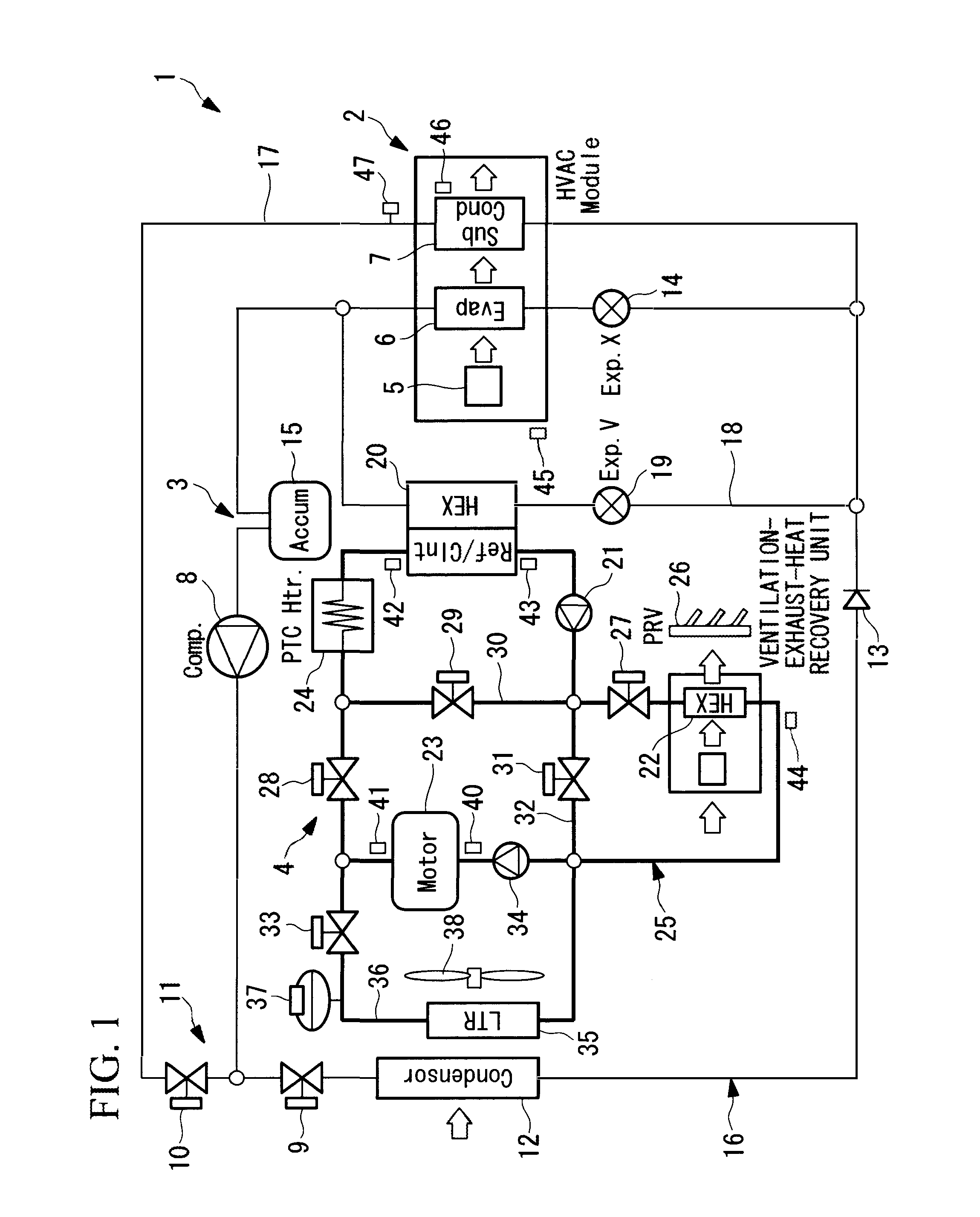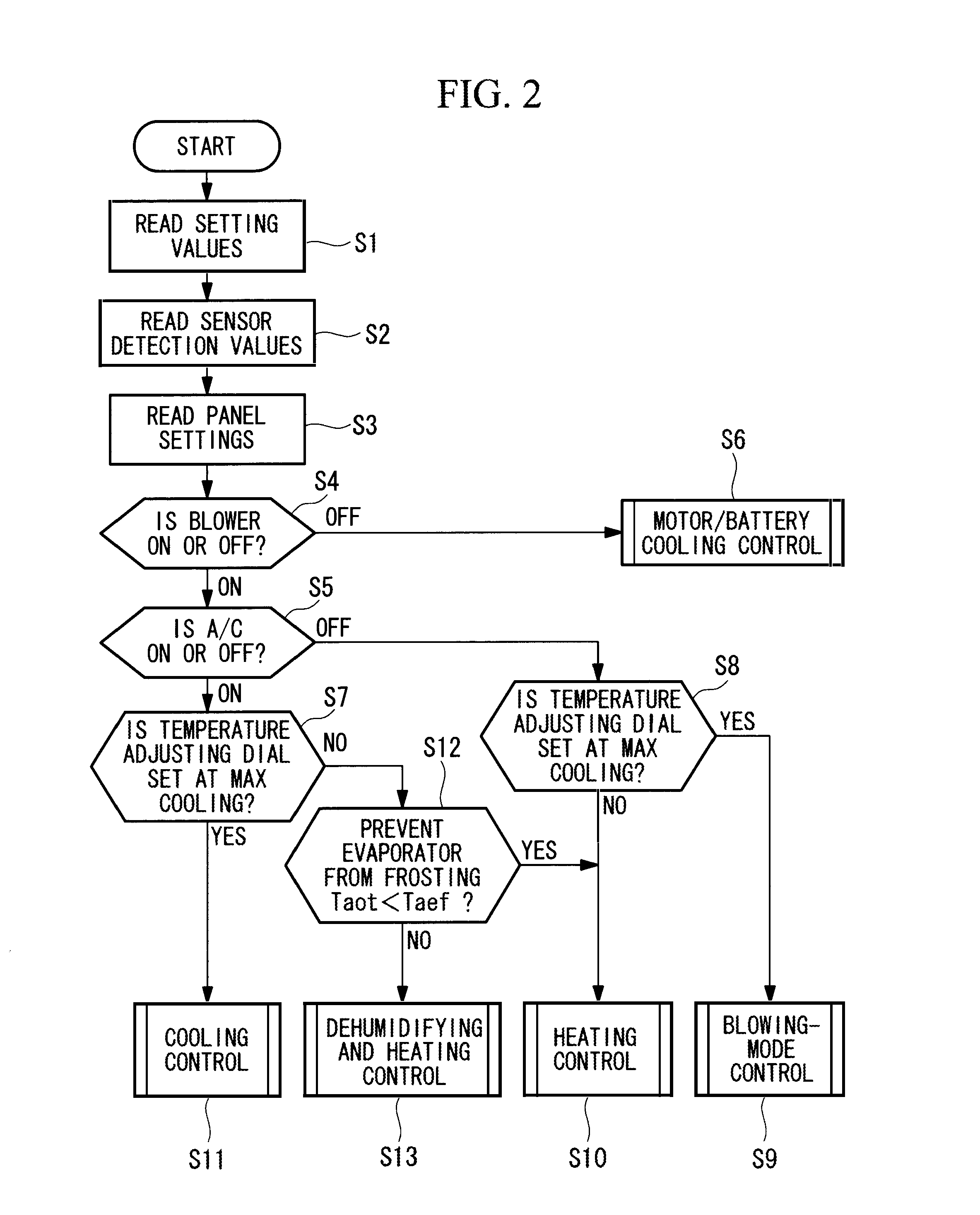Vehicle air-conditioning system and operation control method therefor
a technology of vehicle air conditioner and operation control method, which is applied in the direction of battery/fuel cell control arrangement, electric devices, propulsion by batteries/cells, etc., can solve the problems of insufficient heating capacity, difficulty in heating, and inability to perform heating by using coolant or combustion exhaust heat, so as to reduce the use of electric heaters, stable heating or dehumidification and heating, the effect of efficient us
- Summary
- Abstract
- Description
- Claims
- Application Information
AI Technical Summary
Benefits of technology
Problems solved by technology
Method used
Image
Examples
first embodiment
[0082]A first embodiment of the present invention will be described below with reference to FIGS. 1 to 27.
[0083]FIG. 1 is a diagram showing the system configuration of a vehicle air-conditioning system 1 according to the first embodiment of the present invention. The vehicle air-conditioning system 1 is composed of an HVAC (heating ventilation and air conditioning) unit 2, a heat pump cycle 3, and a coolant cycle 4.
[0084]The HVAC unit 2 includes a blower for blowing air (blower) 5, a refrigerant evaporator 6 that constitutes the heat pump cycle 3, and a second refrigerant condenser 7 that is also called a sub-condenser, the refrigerant evaporator 6 and the second refrigerant condenser 7 being sequentially provided in a blowing path of the blower 5 from the upstream side to the downstream side. The HVAC unit 2 is installed in an instrument panel of a vehicle to blow, into a vehicle interior, air whose temperature has been adjusted by the refrigerant evaporator 6 and the second refrig...
second embodiment
[0116]Next, a second embodiment of the present invention will be described with reference to FIGS. 2 to 27.
[0117]This embodiment relates to an operation control method for automatically operating the vehicle air-conditioning system of the above-described first embodiment. FIGS. 2 to 7 show control flows of the operation control method. FIG. 8 shows a diagram of a list of operation mode patterns. FIGS. 9 to 27 show cycle diagrams in which the flows of the refrigerant and the coolant are indicated (by arrows in the figures) in respective operation modes.
[0118]According to this embodiment, as shown in FIG. 2, when the operation is started (START), in Step S1, predetermined setting values are read, such as a frost temperature Taef of the refrigerant evaporator 6, an air-cooling switching temperature Tcmi1 of the motor / battery 23, a refrigerant-cooling switching temperature Tcmi2 of the motor / battery 23, a coolant inlet required temperature Tcni1 of the refrigerant / coolant heat exchanger...
PUM
 Login to View More
Login to View More Abstract
Description
Claims
Application Information
 Login to View More
Login to View More - R&D
- Intellectual Property
- Life Sciences
- Materials
- Tech Scout
- Unparalleled Data Quality
- Higher Quality Content
- 60% Fewer Hallucinations
Browse by: Latest US Patents, China's latest patents, Technical Efficacy Thesaurus, Application Domain, Technology Topic, Popular Technical Reports.
© 2025 PatSnap. All rights reserved.Legal|Privacy policy|Modern Slavery Act Transparency Statement|Sitemap|About US| Contact US: help@patsnap.com



